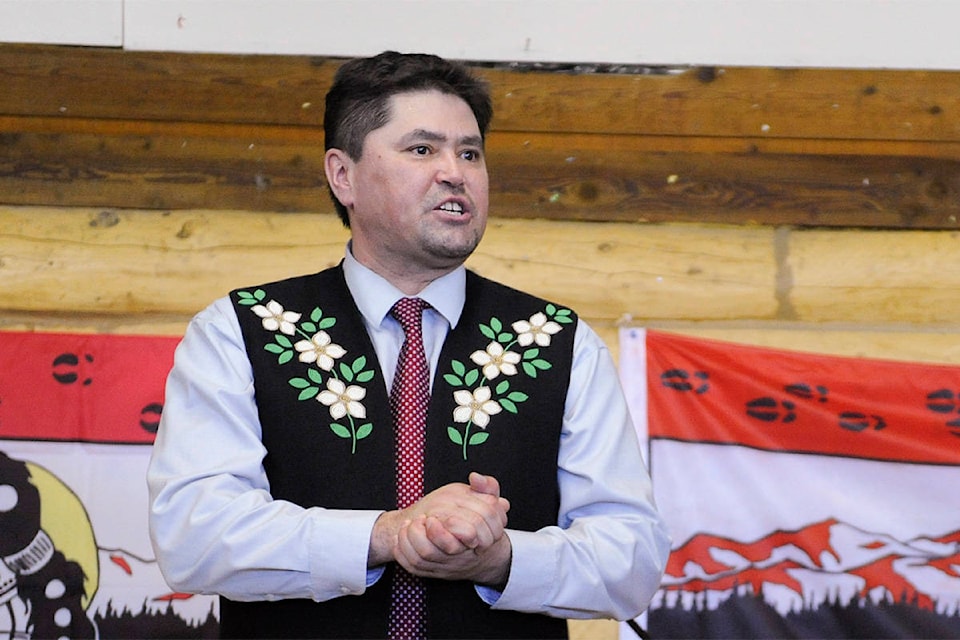Vuntut Gwitchin First Nation may double down on efforts to protect Porcupine River salmon, according to a councillor.
Citizens have been broaching concerns about commercial fisheries in Alaska, Darius Elias told the News, noting that they’ve snowballed since the First Nation’s last general assembly.
“It’s a huge gap and it’s a huge concern because they harvest over 250,000 salmon,” he said, referring to fall chum. “I’ll tell you the truth: Our people’s patience is running thin.”
Elias said restoration work has continued unabated, but that it could be all for nothing.
“We have spent millions of dollars over the years, whether it be in-stream incubation or whether it be the Fishing Branch weir or spawning areas,” he said. “The sentiment from the public and our people is we’re doing all this work and the major benefactor are the fishers in Alaska for our efforts.
“This is not a finger pointing exercise,” he continued, “because it’s an incredibly complex salmon matrix that we’re dealing with. We’re all in this together.”
Some citizens have said salmon should be given more attention, perhaps equal to that of the Porcupine caribou herd, said Elias, clarifying that the First Nation has yet to pass resolutions that would bring advocacy efforts into the same orbit.
The herd is vulnerable to an oil and gas development in the Arctic National Wildlife Refuge. The program has been winding its way through environmental assessment processes. It’s faced stiff opposition from the Gwich’in Nation and non-governmental organizations. Some members of Congress have thrown their weight behind the plight of the Gwich’in. A bill that seeks to thwart the attempt by the Trump administration to develop the refuge passed the House of Representatives last year.
Elias said elders have stressed that traditional territory — 56 per cent of which is protected — be treated as one ecological unit. In other words, issues affecting the environment are interwoven.
“(Citizens) see a marked similarity between the Porcupine caribou herd issue,” he said. “We look at this as a healthy northern ecosystem. The salmon have to come to feed the water beetles, to feed the eagles, to feed the grizzlies, to feed the wolves and to feed the trees. That’s the way we’re looking at it as Vuntut Gwitchin.”
Elias called the trajectory of dwindling salmon numbers in the Porcupine River “devastating.”
“They’re going the wrong way,” he said. “As stewards, it’s our responsibility not to sit idly by and watch our ecosystem crash.”
The First Nation has a basic needs allocation in its final agreement. These harvests are constitutionally protected.
The first 750 chinook, 900 coho and 6,000 chum salmon are reserved for Vuntut Gwitchin.
But Elias said these numbers haven’t been reached in years, not even in 2008 when they were lowered.
“Since then, we’ve only met those escapement goals, I believe it’s 50 per cent of the time. Traditional knowledge from our community suggests we only fished one or two days and we had enough for the season, all species of salmon.”
Last month, experts from Alaska and the Yukon said fall chum numbers from the Fishing Branch, a tributary of the Porcupine River, fell below management and treaty goals.
Only 18,171 successfully made the journey in 2019. According to the treaty, there must be a minimum of 22,000.
Delegates from Vuntut Gwitchin are to meet with Alaskan counterparts in the spring, including the Alaska Department of Fish and Game. Elias said the department has agreed to travel to Old Crow. Officials with the department were not immediately available for comment.
Copies of Vuntut Gwitchin’s community-based salmon plan, which was inked in May, have been handed to Alaskan representatives, Elias said.
It has yet to be presented to representatives in Fort Yukon. The Department of Fisheries and Oceans and the Yukon Salmon Sub-Committee have endorsed it, Elias said.
There are some contingency measures that could be pressed, according to the salmon plan, like six-inch nets to let bigger fish pass and releasing live females. Other things include installing sonar beneath Old Crow and incorporating traditional knowledge, Elias said.
Whether more should be done to protect salmon will be addressed during the international Gwich’in gathering on July 20, he said.
Contact Julien Gignac at julien.gignac@yukon-news.com
